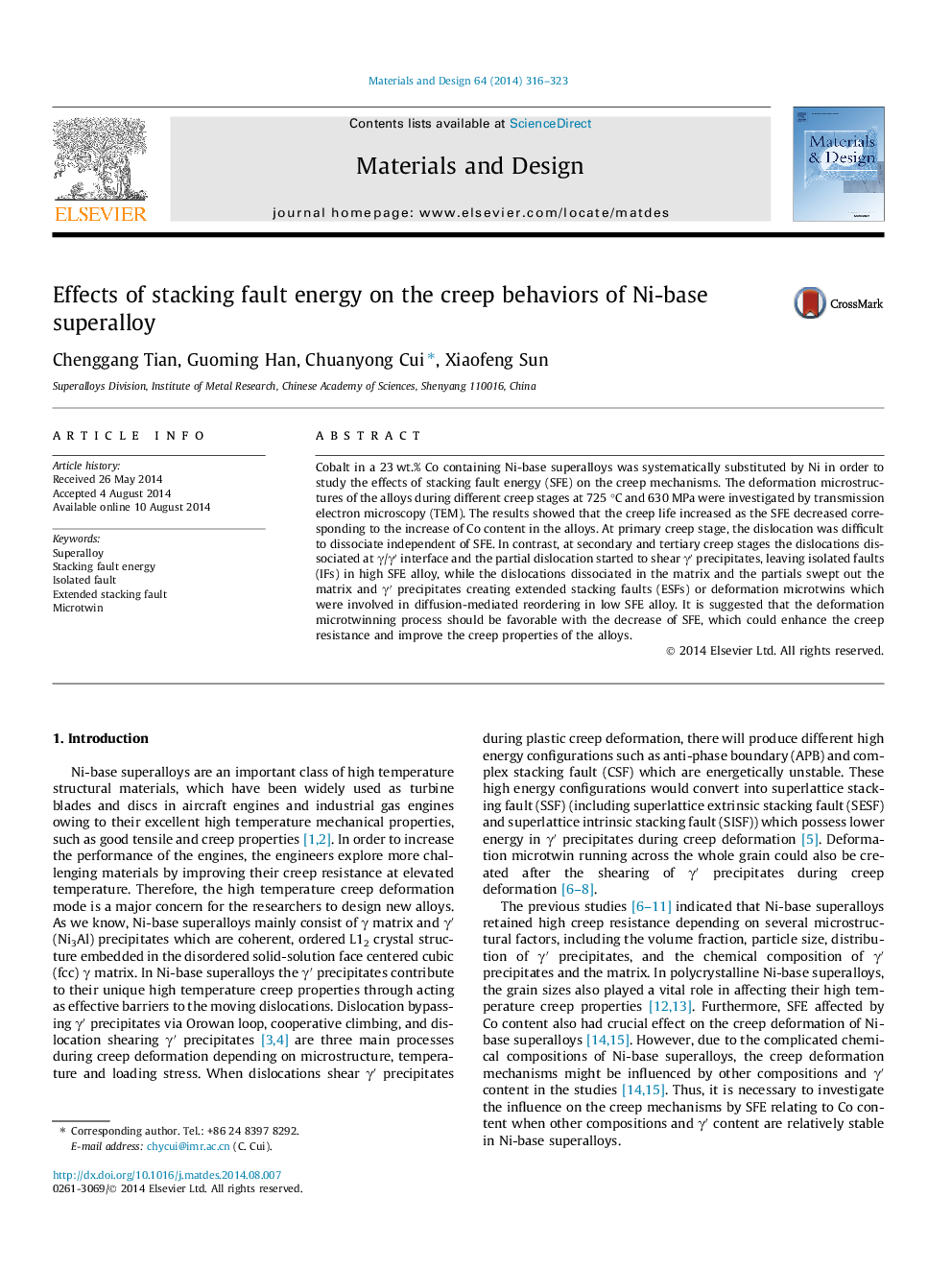| کد مقاله | کد نشریه | سال انتشار | مقاله انگلیسی | نسخه تمام متن |
|---|---|---|---|---|
| 828912 | 1470333 | 2014 | 8 صفحه PDF | دانلود رایگان |
• The decrease of SFE could promote the dislocation dissociation.
• The creep mechanisms were significantly affected by the SFE of the alloys.
• The creep properties of the alloys improved with the decrease of SFE by facilitating the microtwinning process.
Cobalt in a 23 wt.% Co containing Ni-base superalloys was systematically substituted by Ni in order to study the effects of stacking fault energy (SFE) on the creep mechanisms. The deformation microstructures of the alloys during different creep stages at 725 °C and 630 MPa were investigated by transmission electron microscopy (TEM). The results showed that the creep life increased as the SFE decreased corresponding to the increase of Co content in the alloys. At primary creep stage, the dislocation was difficult to dissociate independent of SFE. In contrast, at secondary and tertiary creep stages the dislocations dissociated at γ/γ′ interface and the partial dislocation started to shear γ′ precipitates, leaving isolated faults (IFs) in high SFE alloy, while the dislocations dissociated in the matrix and the partials swept out the matrix and γ′ precipitates creating extended stacking faults (ESFs) or deformation microtwins which were involved in diffusion-mediated reordering in low SFE alloy. It is suggested that the deformation microtwinning process should be favorable with the decrease of SFE, which could enhance the creep resistance and improve the creep properties of the alloys.
Journal: Materials & Design - Volume 64, December 2014, Pages 316–323
